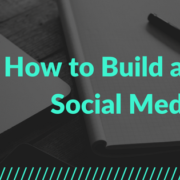4 Ways to Rock a Blogging Conference
If you’re in the influencer world, you know that a blogging conference is a great way to get connected – whether it be with brands or other influencers. Maybe you’ve never been to one but you want to and now you’re ready to take the plunge. Don’t worry – everyone starts out a newbie and can go on to conquer a conference!
Conferences can be intimidating, especially if you’re going alone. Then there are so many, it’s easy to wonder how to choose the right one. Some of my favorites are Mom 2.0 Summit, the Women in Travel Summit, ShiftCon and Blogalicious. Ultimately, you’ll want to go to a conference with a theme and sponsors that would fit in naturally with your blog content.
If you’re new to the game, here are four ways to make the most of any conference!
- Network, network, and oh yeah, network!
Conferences are less about what you know and more about who you get to know. Of course, you’ll want to learn a lot at sessions – but do take advantage of the ample opportunity to network! We don’t have to tell you that influencer marketing is all about collaboration. Sure, you run your channels, and you’ve built your brand, but you don’t become a success all on your own. You have to grow your audience and content, and who better to learn from than other influencers?
Influencers have told us before: “It’s a competitive market.” Instead of thinking that way, look at them as people who are trying to be great and maybe you each have what the other needs to get there. Sharing is caring! We love meeting and working with different influencers, and conferences are a great place to get that face-to-face time.
We have a Facebook group for all of the influencers in our network, Everywhere Society. It’s a place where all of our influencers can connect with each other and foster those relationships. Conferences allow you to do that in real life. Don’t shield yourself from making a new #BloggerBestie because they could be competition – they need you as much as you need them.
- Pack the right things
The most obvious things in the (influencer conference) world are most likely what you will forget to pack. Grab the suitcase, add these things, and when you’re done you can take your “ready to go” selfie!
- Business cards: First and foremost, bring them! It’s the tangible connection between you and everyone you meet. Not bringing business cards signals that you’re not prepared or that you aren’t that serious about your blog.
- At least one backup charger: Unless you have some new, magical phone with an endless battery, you’ll need it. Every sponsor has a photo opp, and the rest of the day you’ll be on social media and snapping pics with your new #BloggerBesties – all of those will suck the life right out of your phone.
- Notebook: We can’t stress this enough, even in 2017, you’ll want to write things down in a non-digital format. You’re going into session after session, and you’re meeting people and brands that can propel your brand forward in between them. Trust us, you’ll have a lot of notes to look back on because it’s truly too much to remember
- Have a plan and know it!
From the moment you buy your tickets, don’t be surprised if you get an email at least once a day. Don’t disregard them as spam and delete them, but read them and form a game plan. Conferences pack as much as they can into a very short time frame. You’ll want to do it all and meet everyone, but be strategic and focus your time where it’s going to be the most beneficial to you. Know the brands that you’d like to work with and have your pitch ready. Make them want to reach out to you once they’re back in the office! But make sure you grab their cards so you can follow-up.
- Engage
Every conference has a hashtag. Not only are other influencers using it but so are brands. Make yourself known before you ever even get your badge at check-in and join the conversation early on. Want to take your engagement up a notch? Be a conference ambassador. We love taking members of Everywhere Society to conferences with us – either as brand ambassadors or agency reps. Our #BloggerBestie Ady of Verbal Gold recently went to Women in Travel Summit to represent society and encourage all these phenomenal travel bloggers to join our network. This was a major value add for us as we’ve recently taken on some major travel brands. Leticia Barr attended Mom 2.0 Summit with us as a brand ambassador for our client Domain.Me. This is an awesome way to gain a sponsorship to a conference and build a relationship with a brand.
The only thing left to do is decide which conference is in your future. Here’s a list of some conferences we’re considering attending this fall. Will we see you there?


